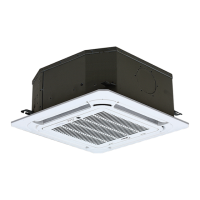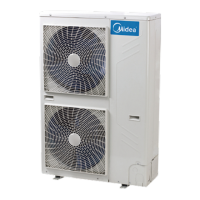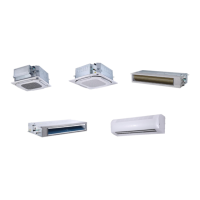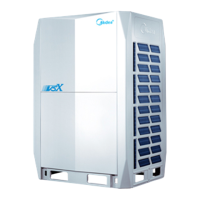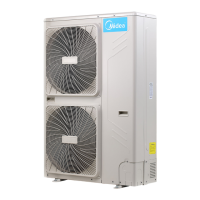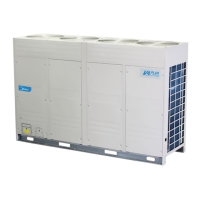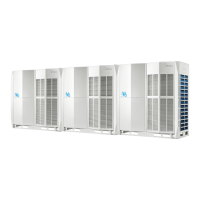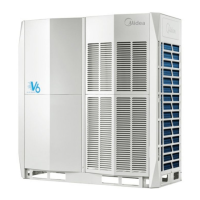Part
6
-
Diagnosis and Troubleshooting
Compressor discharge pipe temperature
sensor does not be properly connected
to outdoor main PCB.
1
Ensure the sensor are connected
properly
Compressor discharge pipe temperature
sensor have short circuited or failed
2
Replace the faulty sensor
High pressure sensor connection on
outdoor main PCB is loose
3
Ensure the sensor is connected properly
High pressure sensor has short-circuited
or failed
4
Check the fault that EEVA in MS can not
be fully closed. Or check the fault that
expansion valve of IDU can not be fully
closed or the fan does not work, which
may result in partial evaporation.
T6B-T6A<3°C and T6A-Te <3°C and EEVC
minimum opening?
T8 -Te <2°C and EEVA minimum
opening(Evaporator)?
Check the fault that EEVA or EEVC can’t
be completely closed; or SV5 can’t be
opened.
Discharge part of the refrigerant. Add oil
if it leaks during discharge
Replace the outdoor main PCB
Notes:
1. Compressor top temperature sensor and discharge pipe temperature sensor connections are ports CN4 on the outdoor main PCB.
2. Measure sensor resistance. If the resistance is too low, the sensor has short-circuited. If the resistance is not consistent with the sensor’s resistance
characteristics table, the sensor has failed.
3. High pressure sensor connection is port CN17 on the outdoor main PCB.
4. Measure the resistance among the three terminals of the pressure sensor. If the resistance is of the order of mega Ohms or infinite, the pressure sensor has
failed.
5. Excess refrigerant causes discharge temperature to be lower than normal, discharge pressure to be higher than normal and suction pressure to be higher
than normal.
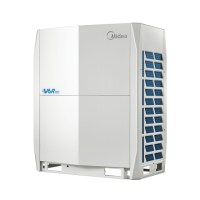
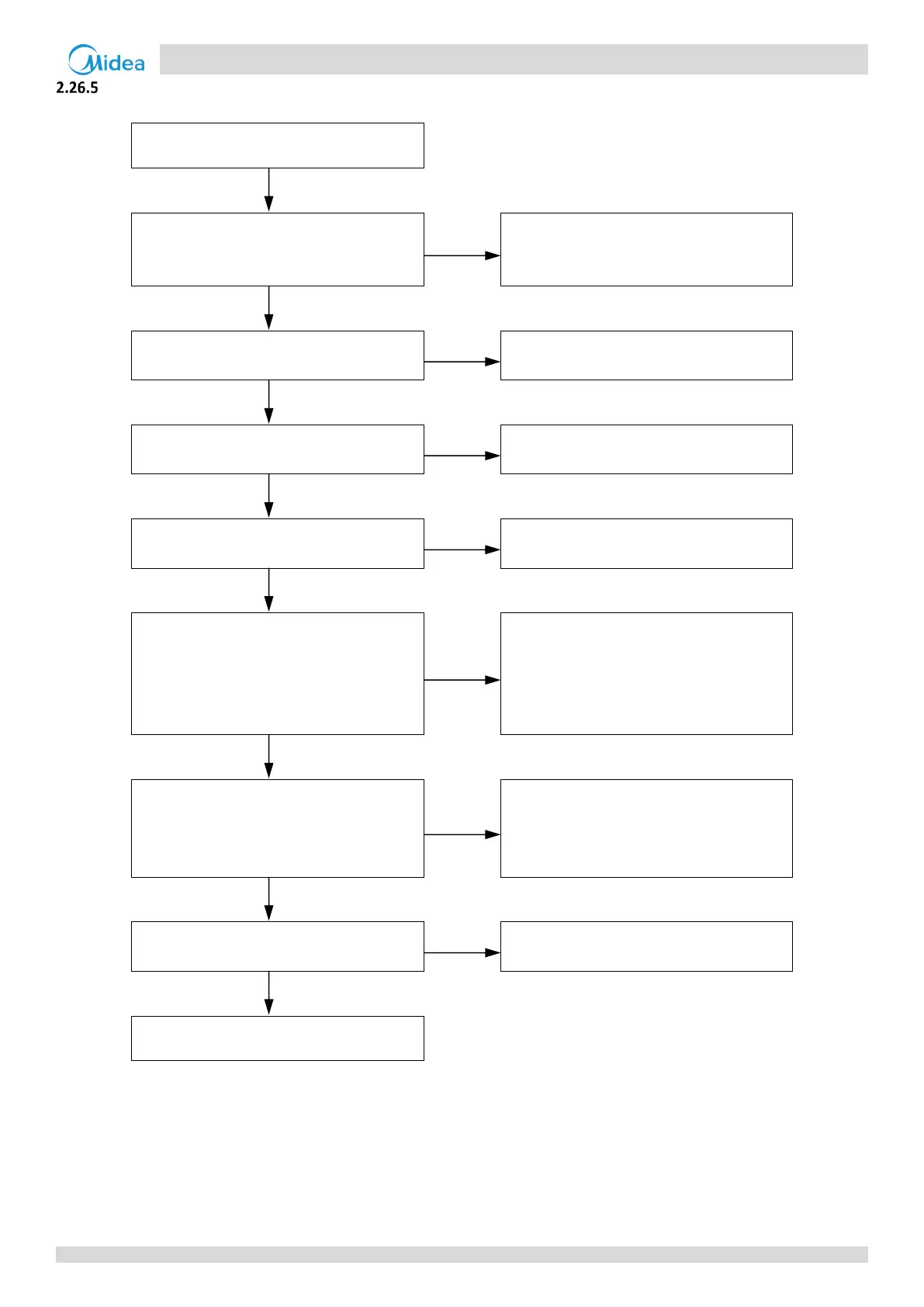